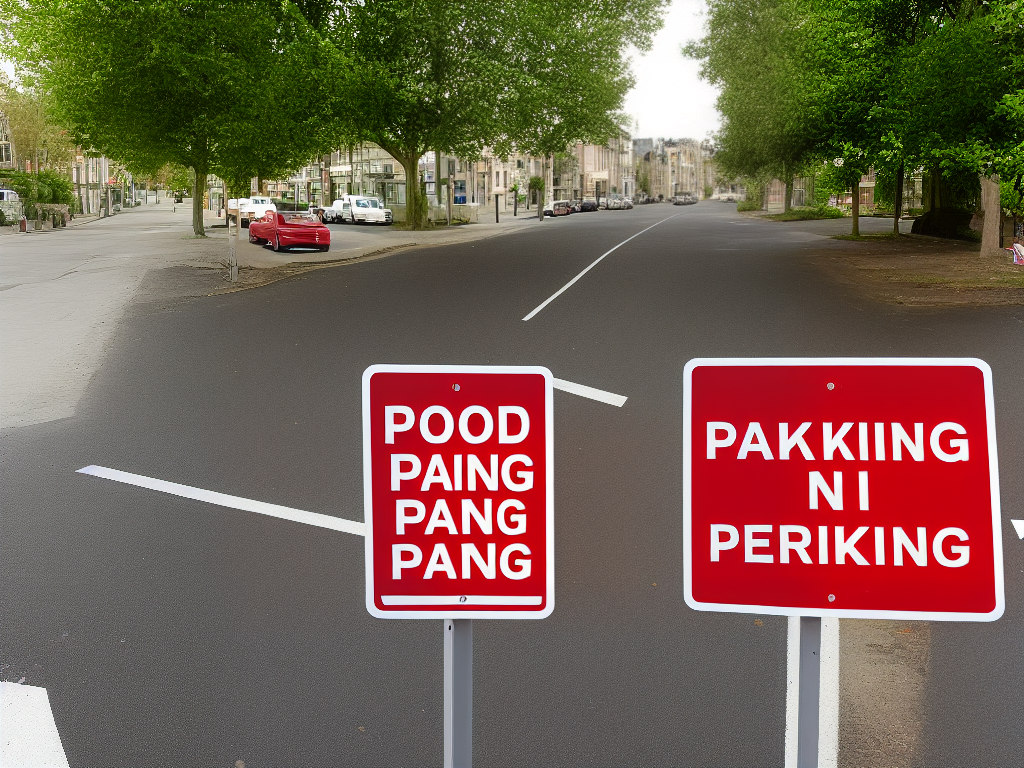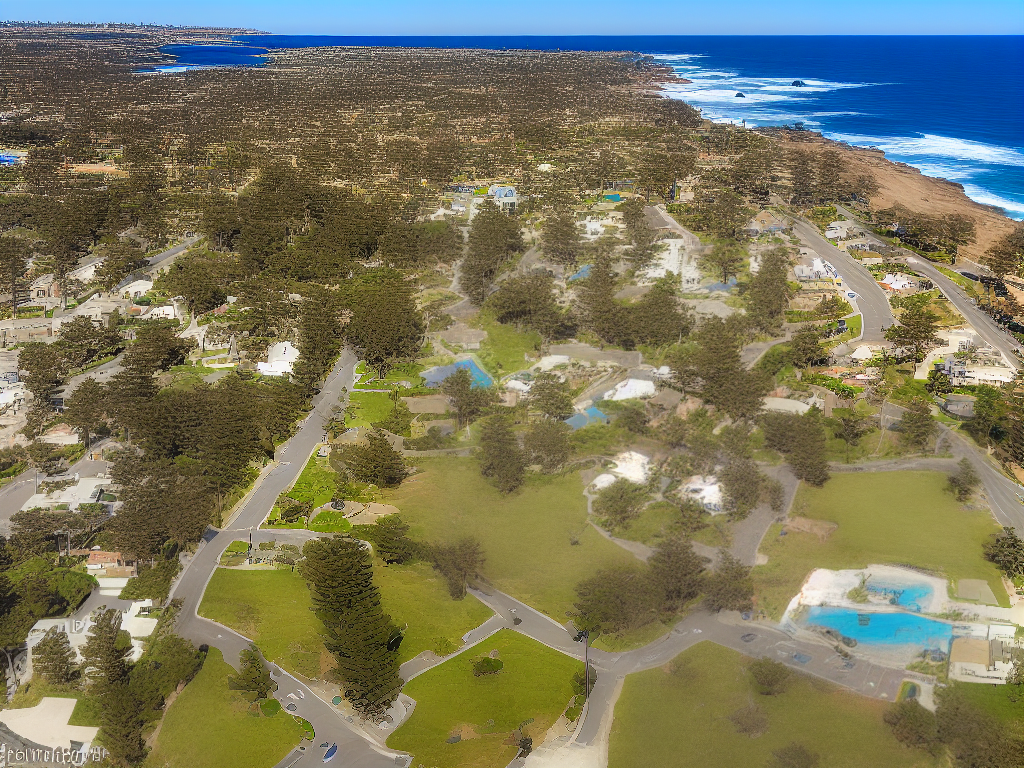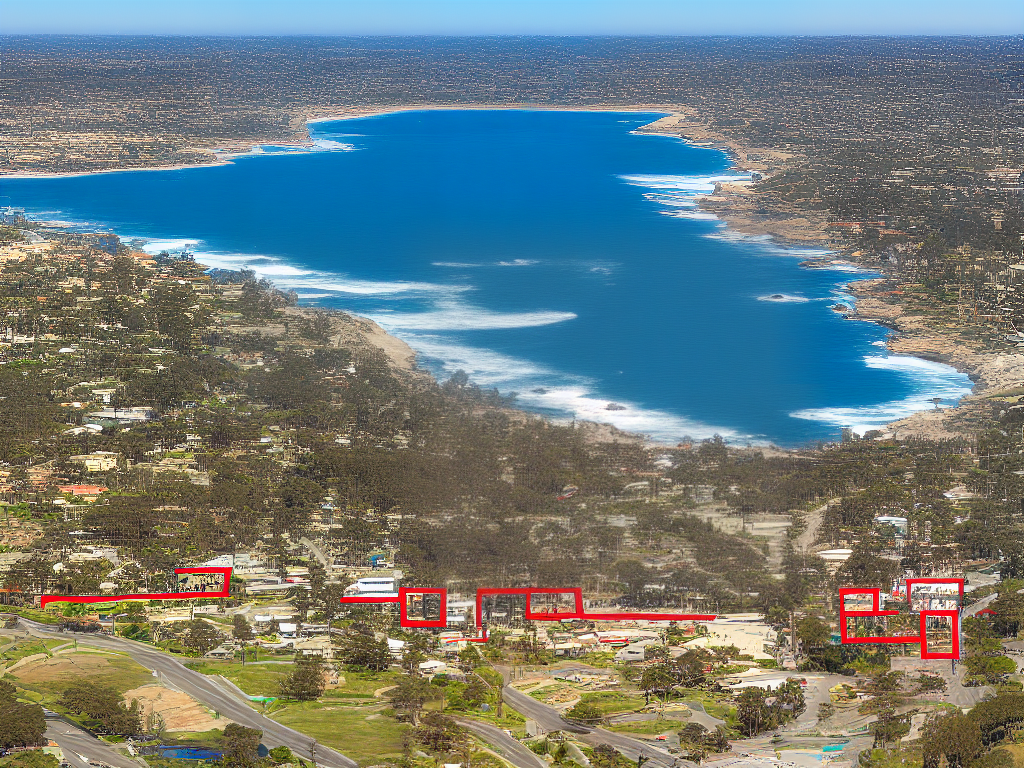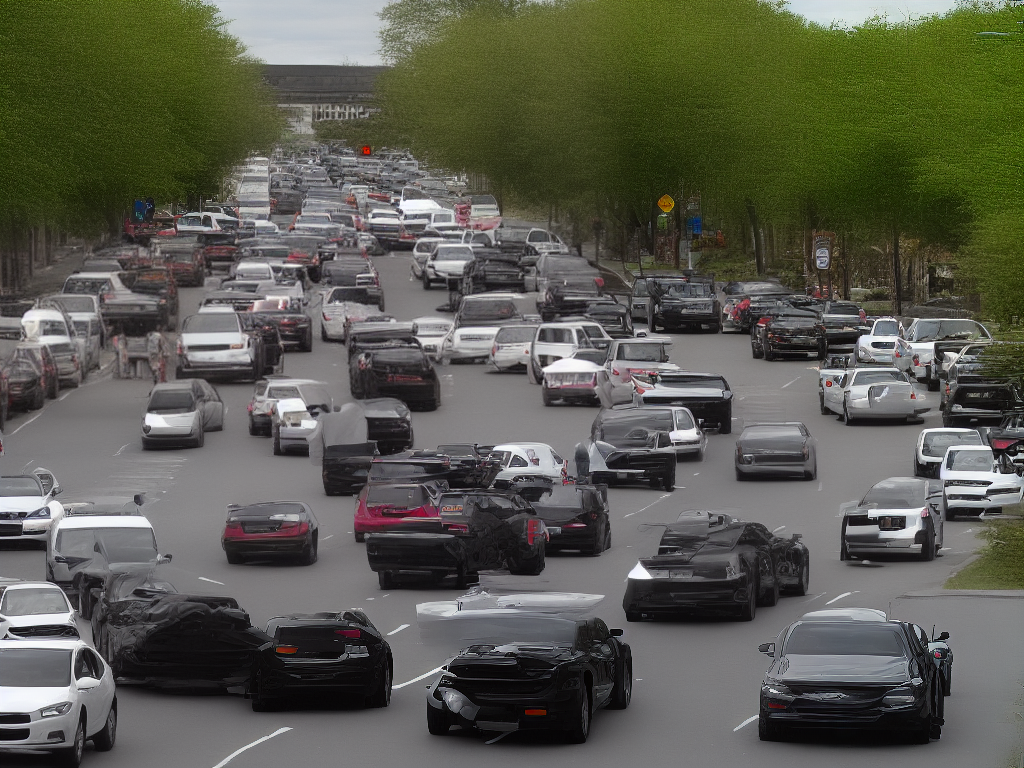La Jolla Cove, a picturesque gem along California’s coastline, attracts countless visitors each year who come to enjoy the stunning views, diverse marine life, and remarkable recreational offerings. However, the quest for convenient and affordable parking in the area has been an ongoing challenge for both visitors and residents alike. This essay delves into various aspects of parking at La Jolla Cove, from its historical development and current regulations, to alternative transportation options and the impact these challenges have on the local community.
History of La Jolla Cove Parking
La Jolla Cove, a popular tourist destination and ecological reserve located in San Diego, California, has a long-standing relationship with parking facilities and management. The picturesque cove, surrounded by cliffs and situated in the heart of the La Jolla community, has provided an exceptional beach experience for residents and visitors alike since the early 1900s. As La Jolla Cove’s popularity grew, so did the need for adequate parking facilities to accommodate the increasing number of visitors.
In the 1920s, the first parking lots were constructed near La Jolla Cove to provide visitors with a place for their automobiles. As the demand for parking increased during the 1930s and 1940s, the city recognized the need for a more sophisticated parking management system. Consequently, they implemented parking fees and regulations, such as time limits on parking spots, to optimize the use of available spaces.
Over the years, the parking facilities around La Jolla Cove have undergone several modifications and expansions. For instance, in the 1950s, the La Jolla Recreation Center parking lot was added, providing additional parking spaces for visitors to the area. Moreover, the 1960s saw the construction of the La Jolla Cove Bridge Club parking lot, further enhancing the parking capacity near the cove.
During the 1970s, the city of San Diego introduced a comprehensive parking management program aimed at addressing the growing challenges faced by the La Jolla Cove community. As part of this program, various parking solutions were implemented in the area, such as the introduction of parking permits for residents, timed parking meters, and off-street parking facilities, with an emphasis on maintaining a balance between local and visitor parking.
In the 1980s and 1990s, the city of San Diego began employing innovative technologies to improve parking facilities around the picturesque La Jolla Cove. These technologies included electronic parking meters, pay-and-display machines, and signage systems to provide real-time parking availability information. With growing tourist demand, San Diego continues to work diligently to enhance and expand the parking facilities around this popular destination, ensuring a premium experience for environmental enthusiasts, residents, and out-of-towners.

Parking Regulations and Enforcement
As a result of these efforts, La Jolla Cove has become a beloved destination for both locals and visitors. However, it’s important to be aware of the area’s parking regulations to avoid any penalties or inconveniences caused by towing. Adequate knowledge of these rules will ensure a hassle-free experience while exploring the stunning natural scenery of La Jolla Cove.
The primary parking options in the La Jolla Cove area are the street parking along Coast Boulevard and the adjacent residential streets. Street parking is generally limited to 2 or 3 hours and is strictly enforced by parking enforcement officers. Be attentive to posted signage, as parking restrictions vary from street to street. Restrictions may include no parking during certain hours, temporary no parking zones due to construction, or no parking without a residential permit.
In addition to street parking, there are several paid parking lots nearby, such as the La Jolla Cove Bridge Club lot, which offers longer-term parking. Paid lots typically have time limits ranging from a few hours to all day, and the fees will vary depending on the location and duration of your stay. Paying attention to posted signage is crucial to avoid unexpected fees or fines.
If you plan on frequenting La Jolla Cove and need more consistent parking options, consider obtaining a residential or business parking permit. These permits are provided by the city of San Diego and allow you to park in designated permit areas without having to adhere to posted time limits. Application for residential or business parking permits can be done through the City of San Diego’s website, and documentation supporting your eligibility will be required.
La Jolla Cove in San Diego, California is a popular destination for locals and tourists to enjoy the beautiful beach and surrounding attractions. With its popularity, parking around La Jolla Cove can be challenging due to limited spaces. It’s crucial to be aware of the parking regulations in the area to avoid any issues, as enforcement officers frequently patrol and issue citations. Penalties for violations can include hefty fines or even towing of your vehicle.

Available Parking Options
To ensure a smoother visit to this gorgeous location, always be mindful of posted signage regarding time limits, permits, and other parking restrictions. Understanding the different parking options available will make your visit more enjoyable. Alternatively, consider using more sustainable transportation options such as biking, walking, or public transportation to further alleviate any parking concerns and make the most of your time at La Jolla Cove.
There are several public parking options for people visiting La Jolla Cove. One of the most popular ones is the free parking lot located at the Scripps Park adjacent to the Cove. This parking lot contains around 30 spaces and serves as the closest parking option to La Jolla Cove. However, due to its limited capacity and popularity, it fills up quite quickly, especially during the weekends and holidays. There is another small public parking lot located across from La Jolla Village Tennis Club, at 7630 Fay Ave, which has about 10 spaces. Additionally, you can find street parking around the Cove, however, be mindful of posted restrictions and time limits.
Parking garages are also available for those interested in paid parking options. One popular parking garage is located at 888 Prospect Street, offering hourly and daily rates. The hourly rate for parking at this garage is typically around $1.75 per hour, with a daily maximum charge of around $15. Another nearby parking garage is at 1007 Prospect Street, offering similar hourly rates.
For visitors preferring to park in a more central location and explore La Jolla on foot, the parking garage at La Jolla Village Square, located at 8657 Villa La Jolla Drive, is a great option. This garage typically offers free parking for the first two hours, followed by a charge of $2 per additional hour. This location is a short 1.5-mile walk from La Jolla Cove and allows visitors to enjoy the beautiful La Jolla scenery along the way.
La Jolla Cove, one of San Diego’s most popular tourist destinations, is known for its beautiful beaches, amazing wildlife, and picturesque views. However, it is also notorious for its limited parking spaces, which may make a trip to this beautiful location quite challenging. Arriving early and being prepared to potentially park further away from the Cove and walk can help alleviate some of this stress. Knowing the various parking options in the area will assist in making your visit to La Jolla Cove a more enjoyable experience.

Navigating La Jolla Cove Streets
It is important to note that parking in La Jolla Cove can be particularly challenging during peak times, such as weekends, holidays, and summer months. To optimize parking strategies, it is essential to become familiar with the surrounding street network and understand how to effectively navigate the area. By acquainting yourself with the various parking options and understanding the dynamics of the area during busy times, you can ensure a smooth and enjoyable visit to this scenic destination.
The streets around La Jolla Cove are mostly narrow and winding, some of which are one-way, as well as steep inclines that tend to fill up quickly on weekends and holidays. To increase the likelihood of finding parking, it is vital to acquaint yourself with the different side streets leading to and from the Cove. The main streets leading to La Jolla Cove are Girard Avenue, Prospect Street, and Coast Boulevard. Familiarizing yourself with these streets will provide a clear understanding of where to begin your parking search.
In addition to the main streets, several residential streets offer parking spots for beachgoers and visitors. However, it is essential to be mindful of parking restrictions, as some streets have 2-hour parking limits, and others are permit-parking only. Be aware of posted signs indicating parking restrictions and guidelines to avoid any potential parking fines or towing. An excellent alternative for parking in residential areas is the paid-parking lots commonly found along Prospect Street. These lots usually charge per hour or offer a day rate for visitors.
Public transportation is another viable option for navigating La Jolla Cove and reducing the parking headache. The Metropolitan Transit System (MTS) offers various bus routes that serve La Jolla’s downtown area, with stops a short walking distance from the Cove. Also, ridesharing services like Uber and Lyft are popular choices among tourists and locals alike. With their La Jolla Cove drop-off and pick-up points, you won’t need to worry about parking at all.
An often overlooked yet effective approach to La Jolla Cove parking is arriving early, particularly during peak-season weekends and holidays. To take advantage of the larger (but limited) parking spots along Coast Boulevard and Scripps Park, it is best to plan ahead and allot extra time for finding parking. Moreover, mornings are often less crowded, providing not only ample parking options but also a serene, uncrowded beach experience perfect for starting the day.

Alternative Transportation Ideas
Given that La Jolla Cove is a popular destination for locals and tourists alike, the area attracts thousands of visitors year-round for its picturesque scenery, wildlife, and outdoor activities. Consequently, the popularity of La Jolla Cove contributes to the challenge of finding parking during peak hours. By considering alternative transportation options to reach the area, visitors can mitigate these parking issues and enjoy a more seamless experience at the cove.
One effective way to reach La Jolla Cove without relying on personal vehicles is using public transportation. The San Diego Metropolitan Transit System (MTS) provides several bus lines that service the La Jolla area, with stops near the Cove. For example, Route 30 runs from downtown San Diego through Pacific Beach, La Jolla Village, and eventually reaching the Cove. This option may be more cost-effective and environmentally friendly than driving a personal vehicle, as it helps reduce the number of cars on the road and contributes to decreased traffic congestion.
Ridesharing services such as Uber and Lyft also offer a convenient option for those wishing to visit La Jolla Cove without the hassle of finding a parking spot. By using these platforms, visitors can hail a ride from their current location to the desired destination without worrying about navigation or parking, and can even split the fare with friends or family members. These services are increasingly popular in urban areas and are widely available in the San Diego region.
Bike-sharing programs are another alternative transportation option that can benefit those trying to reduce their reliance on personal vehicles. San Diego’s bike-sharing system, Discover Bike, allows users to rent bicycles at various stations throughout the city. With rental stations near La Jolla Cove, visitors can enjoy a leisurely bike ride along the coast while avoiding parking challenges. Additionally, the picturesque scenery and well-maintained bike lanes make cycling an enjoyable way to explore the area.
One way to tackle the parking issue at La Jolla Cove is by considering creative transportation solutions such as electric scooters and pedal-assist bikes. Companies like Bird, Lime, and Jump offer app-based rentals that make it easy for tourists and locals alike to access eco-friendly transportation options. By adopting these alternative methods of reaching La Jolla Cove, visitors can not only save time and reduce stress associated with parking but also contribute to a more sustainable future by reducing carbon emissions and alleviating traffic congestion.

Impact on Local Businesses and Residents
Addressing the parking challenges in La Jolla Cove is crucial for local businesses and residents in the area. A primary concern for businesses is the accessibility to their establishments for customers. With limited parking spaces available, potential patrons may be deterred, choosing to visit other areas instead. This has two potential repercussions: lost revenue for businesses and increased traffic congestion as drivers circle the streets in search of available parking. By promoting the use of alternative transportation methods like electric scooters and bikes, the area can become more accessible, allowing local businesses to thrive and easing traffic conditions.
Traffic congestion is a significant issue in La Jolla Cove due in part to the high parking demand. As mentioned earlier, drivers often have to circle the streets in search of parking spaces, contributing to traffic congestion and frustration amongst both residents and visitors. The bumper-to-bumper traffic not only makes it challenging for potential customers to visit local businesses but also impacts the quality of life for residents as it may lead to longer commutes and increased noise pollution.
Noise pollution is another area of concern for businesses and residents in La Jolla Cove due to the high demand for parking. The constant flow of vehicular traffic creates a noisy environment, which may have negative consequences for businesses, especially those relying on peaceful or tranquil settings, such as restaurants with outdoor seating or local spas. Additionally, noise pollution can create an unpleasant living environment for nearby residents, resulting in an overall decline in quality of life.
To ease the impact on local businesses and residents, various attempts have been made to address the parking demand and its associated issues. One such solution is the implementation of parking permits, which allocate certain parking spots for residents or employees of local businesses. This helps ensure that there is adequate parking for these individuals to park close to their homes or places of employment. However, this solution can also create additional problems, as visitors may be unable to access these reserved parking spots, thus limiting their ability to patronize the area’s businesses.
In order to mitigate the impact of parking demand on local businesses and residents at La Jolla Cove, multiple strategies have been employed, such as encouraging the use of public transportation, ride-sharing, or biking. These alternative modes of transportation help reduce congestion, noise pollution, and improve accessibility. Nevertheless, finding the right balance to address issues stemming from high parking demand continues to be a challenge, as the area’s popularity shows no signs of decreasing.

Future Developments and Innovations
Moving forward, advancements in technology may provide significant improvement to parking situations at La Jolla Cove. The implementation of smart parking systems could offer visitors real-time data on parking spot availability through the use of embedded parking sensors. These sensors would communicate with a mobile app to guide drivers to convenient parking locations, resulting in reduced congestion, time-saving for both tourists and residents, and an overall enhanced parking experience.
Another likely development is the utilization of autonomous and electric vehicles (EV) in La Jolla Cove. As more people adopt EVs and self-driving cars, the demand for charging stations and specialized parking spaces will increase, leading to the adoption of an eco-friendly transportation infrastructure. This change can result in more parking areas incorporating dedicated EV charging stations and encouraging the use of cleaner, greener transportation in La Jolla Cove.
The integration of environmental sustainability practices in urban design and planning can also have an impact on La Jolla Cove parking. Green initiatives, such as the incorporation of green roofs on parking garages and the strategic placement of trees to reduce the heat island effect, can help minimize pollution and create a healthier and more eco-friendly environment for visitors and locals. Additionally, these initiatives can also enhance the aesthetic appeal of parking areas, harmoniously blending them with the surrounding coastal landscape.
Another potential trend in the La Jolla Cove parking landscape is the gradual transition from traditional parking lots to multi-purpose lots, where new building designs incorporate mixed-use facilities. These developments can combine parking with retail, commercial and recreational spaces to increase land use efficiency and align with the needs of the 21st-century community. These structures not only provide ample parking space but also contribute to the economic vitality and social vibrancy of La Jolla Cove.
Lastly, as urban mobility continues to evolve, the popularity of micro-mobility solutions like e-scooters and shared bicycles can bring about changes in the requirements for parking spaces. Reduced dependency on personal vehicles could lead to a repurposing of excess parking space for outdoor dining areas, parklets, or other public amenities, subsequently creating a more pedestrian-friendly and vibrant environment in La Jolla Cove. To support such transformations, an active engagement of the community is essential.

Community Engagement and Advocacy
In order to improve La Jolla Cove parking, it is crucial to engage with the community and foster communication among key local stakeholders such as residents, businesses, and government officials. Effective communication can help understand the needs of the community and identify possible solutions to parking problems. Having open channels of communication and organizing regular meetings allow everyone involved to collaboratively decide on the best course of action, ensuring that the adopted measures will benefit the majority of stakeholders and contribute to a more efficient and convenient parking situation in La Jolla Cove.
To address issues related to La Jolla Cove parking, it is essential to gather key representatives from different sectors like local businesses, homeowners, and tourists. By involving these stakeholders in the discussion, each group is given the opportunity to express their concerns, share their ideas, and suggest possible solutions. This diverse input can provide a comprehensive understanding of the parking issues and lead to more effective decision-making.
In addition to hosting community meetings, distributing surveys and questionnaires to residents and local businesses can gather valuable insights into the parking situation. Survey results can help to identify the most pressing concerns and potential opportunities in La Jolla Cove parking, effectively guiding the discussion and prioritization of goals. It is crucial to report the findings of these surveys transparently and publicly and integrate them into planning processes.
Social media and other online platforms can be a catalyst for change by amplifying the voices of La Jolla Cove residents and visitors, sparking productive conversations, and educating the public on ongoing parking initiatives. By creating a dedicated social media page or online forum, people can stay informed about upcoming meetings, share their concerns, and provide feedback on proposals. This form of digital engagement can be a massive boost to advocacy efforts, as it increases accessibility and participation for many community members.
Lastly, collaborating with local government officials is a crucial step towards implementing positive change in La Jolla Cove parking. Building strong relationships with local leaders, council members, and city planners can help to develop practical parking policies and regulations that address the concerns raised by the community. It is essential to work closely with these officials to ensure that any proposed changes align with current city plans and leverage available resources to optimize parking management in La Jolla Cove.

By examining the intricate workings of the La Jolla Cove parking situation, we can better understand the needs of various stakeholders, identify potential solutions, and engage in fruitful conversations with community members and officials. As enthusiasts and hobbyists, our knowledge and passion for the subject will not only contribute to bettering the current situation but also prepare us for the future developments and innovations that will change the landscape of parking at La Jolla Cove. Armed with this knowledge, we can ensure that our beloved coastal destination remains accessible and enjoyable for all, while working together towards a sustainable and harmonious community.

